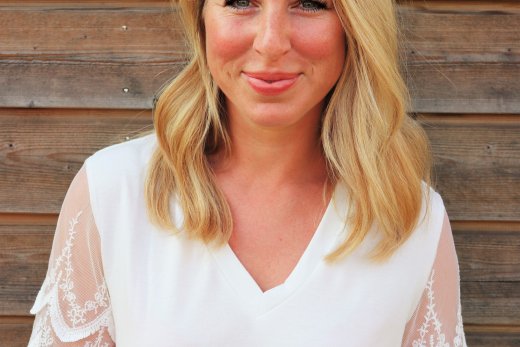28/08/2019
SensUs 2019: Perspective from an RA patient
ReumaNederland is the main patient organization in the Netherlands for rheumatic disease and the most important funder of research in the field of inflammatory arthritis. ReumaNederland has become a partner of SensUs because of the opportunities biosensing can give for a better quality of life for rheumatoid arthritis (RA) patients. Mariëlle Kersten (32) is a patient and will be ambassador for ReumaNederland at the SensUs 2019 event. We spoke with her about her experiences and expectations of living with rheumatoid arthritis.
My name is Mariëlle Kersten, I am 32 years old and I live in Deventer. I am a rheumatoid arthritis patient and will attend the SensUs event 2019. In my daily life, I teach students in the field of Travel, Leisure and Hospitality at the Deltion College in Zwolle. I really like my job, because I am very interested in tourism myself.
Besides my job, I like to play sports in several disciplines. It’s really a way in which I can stop worrying about certain things and clear my mind. In the beginning of my RA, I had difficulties with stopping at the right time, not noticing when I felt my RA. I was used to muscle strains, but a thick knee from RA was new to me. I had to find a new balance. By now, I am used to this and it all happens on ‘automatic pilot’.
In my social circle, everybody knows about my disease. However, sometimes other people do not see that I suffer from RA which can lead to incomprehension. People do not understand that I can’t stand up for elderly when travelling by train if my knee starts to hurt for instance. People often want to see proof, but it’s not always visible. I once had to pay for a dentist’s appointment when I couldn’t go because my knees started to hurt. They couldn’t relate to that and I just called that morning, so I had to pay for the appointment.
I first noticed the inconveniences of RA in 2009 and I was diagnosed with it one year later. I felt several things, for instance a tingling in my knee, which got thick and warm. Later, I suffered from my wrists. This was very annoying and also exhausting for me. During a skiing trip, I was in too much pain to continue skiing, so I went to a hospital and the doctors thought it was bursa inflammation. Eventually, I went to a general practitioner back home and it turned out to be RA all the time.
Throughout the years, I’ve used a list of different medicines in my treatment. Some of them worked, others didn’t. Some brought along too many side effects, which was why I had to stop taking those. Adalimumab as a medicine worked for me. I felt fitter than before and was less exhausted. This was also the time when I picked up exercising again, and I gained more and more trust in my body. Sadly, my skin irritated at the injection spots, which later resulted in swellings. I turned out to be allergic to a component in the biologicals. Now my rheumatologist and I are facing a new challenge: finding a way on how to treat my RA.
This is why I am very enthusiastic about biosensing and what it could contribute in the treatment of RA. At the moment, the treatment consists of some trial and error medicines and hoping that it will catch on. This differs for every patient and it takes months to see the effect of the medicine on the patient. A biosensor can accelerate this whole process, full of inconveniences. I hope the development of biosensors will lead to a more comfortable treatment with more freedom of movement.
If you want to know more about rheumatic disease and the things ReumaNederland does to improve the quality of patients’ lives, visit www.reumanederland.nl

Facebook
YouTube
LinkedIn
Instagram